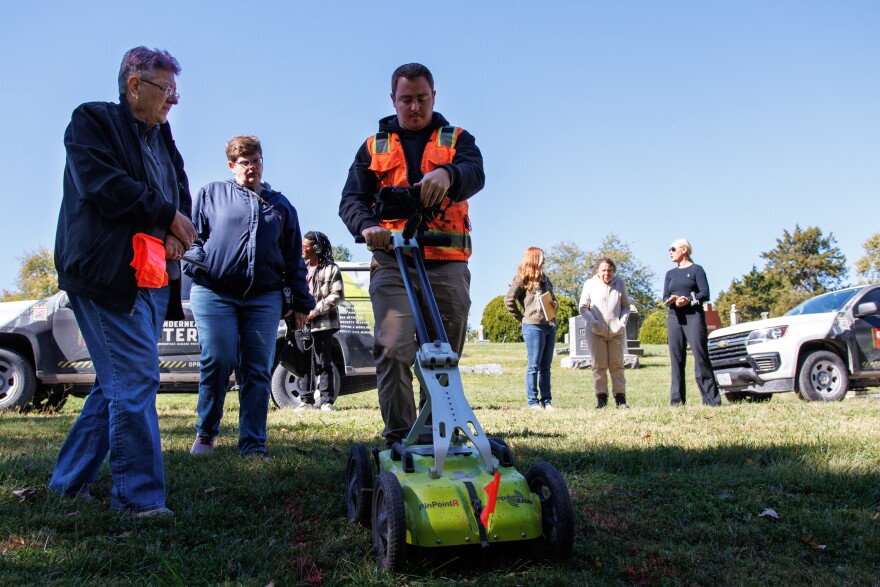A St. Louis County cemetery is using technology to identify the locations of people buried more than a century ago.
Zion Cemetery has more than 800 unmarked graves, and its leaders want to make sure descendants of the buried can find them.
“You get involved with cemeteries because you are interested in the past, and this is one of those times where we didn't have a lot of information, and we wanted to see if we could find some more,” Zion Cemetery Association President Martha Kneib said.
On Wednesday, a team from GPRS, an organization that specializes in ground-penetrating radar to locate utilities, visited the 141-year-old cemetery to find the grave sites and mark their locations.
“The people who are buried here don't have a voice,” Zion Cemetery board member Marian McCreary said. “They are unknown to their descendants, and I would like the information to be available.”
McCreary started reviewing burial records from the 1880s several years ago. She checked St. Louis and Missouri death and birth records since up to 40% of the buried are stillborn babies, infants and young children.

The bodies are located in the cemetery’s tranquility garden, an area that contains the remains of people whose families couldn't afford tombstones, McCreary said.
“Most of them don't even have obituaries because they just didn't have the money, McCreary said. “By today's standards, very inexpensive, but yet that was still burdensome for many people. So that's why this whole section was created.”
This summer, cemetery leaders decided to work with GPRS. The company’s device looks like a lawnmower that emits radar pulses to identify buried objects without disrupting the soil. Operators then mark the location of the disturbances.
“It's not an X-ray machine, it’s sonar that bounces back and gives us the soil densities, the soil readings, and then we interpret those based on our findings,” GPRS Area Manager Mason Mayberry said.
Cemetery leaders are considering building a memorial to the buried people.
Wednesday’s search brought out history buffs and people with ties to the cemetery like Amy Sansone, whose parents are buried in another part of the cemetery.
“It’s nice to find people they're not forgotten,” Sansone said. “It's so sad to think after a while, nobody knows where you are even anymore.”






